Palma de Mallorca is a stunner. Rich in history and brimming with beauty, its labyrinth of honey-coloured stone buildings wraps itself around an awe-inspiring Gothic cathedral.
It is a popular port of call for Mediterranean cruise ships but what should you do if you have just one day in Palma de Mallorca? As a two-time visitor, most recently on a cruise, this is where I can help.
Hit the ground running as a first-time visitor with my 1-day Palma de Mallorca itinerary, especially for cruise ship passengers. I have included a map of the best things to see which you can use as a Palma self-guided walking tour.

Some articles on this website contain affiliate links. This means that I may earn a small commission if you make a purchase through these links. As an Amazon Associate, I earn from qualifying purchases. Read the full disclosure here.
My Suggested 1-Day Palma de Mallorca Itinerary + Map
This Palma 1-day itinerary is based on what I did during a cruise stop in Mallorca. Starting at Palma’s magnificent cathedral, here are the stops:
The distance between these sights is less than 2 miles. To help you on your way, here’s a map you can use as a self-guided Palma walking tour. For step-by-step directions and to send to your phone, click here or on the image.
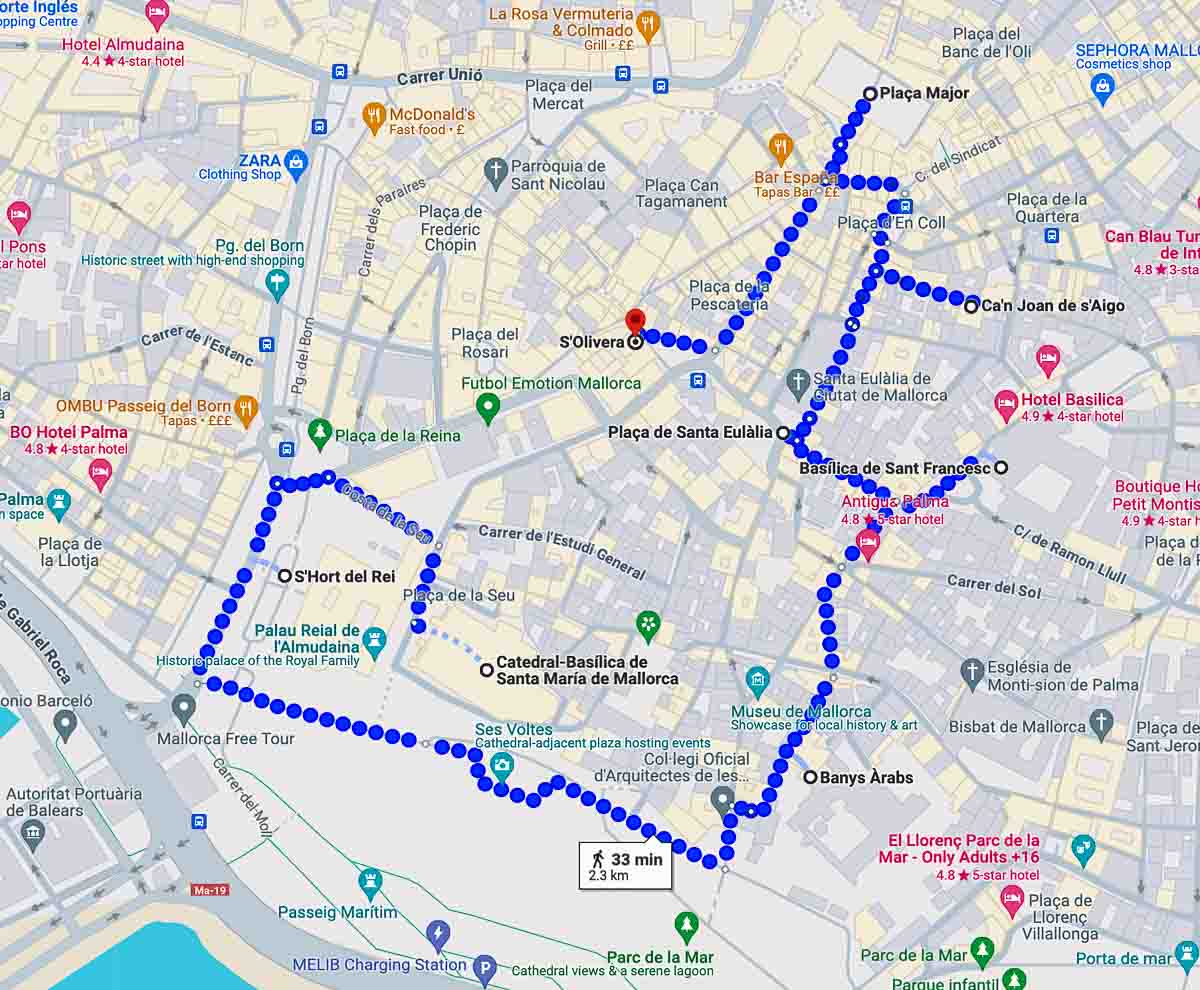
To make the most of your day in Palma de Mallorca, this itinerary focuses on the city’s compact and picturesque Old Town. Also known as El Casco Antiguo, this is where most of Palma’s must-see tourist attractions are located.
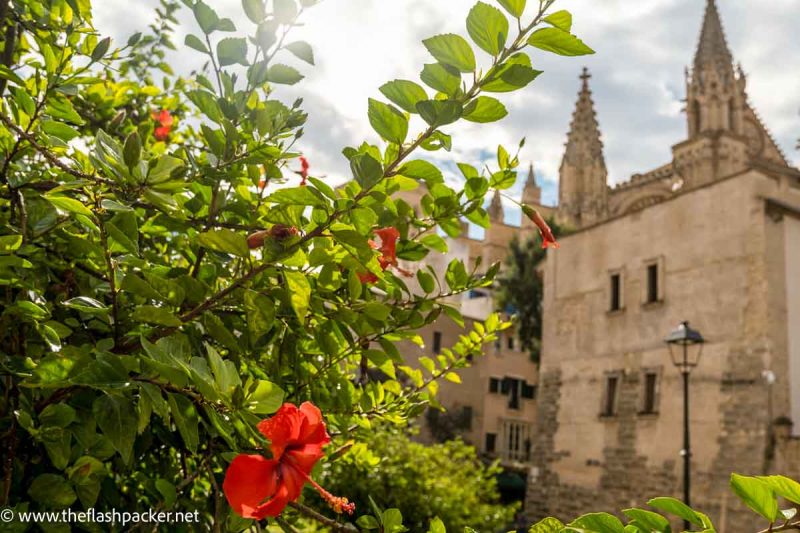
Catedral de Mallorca
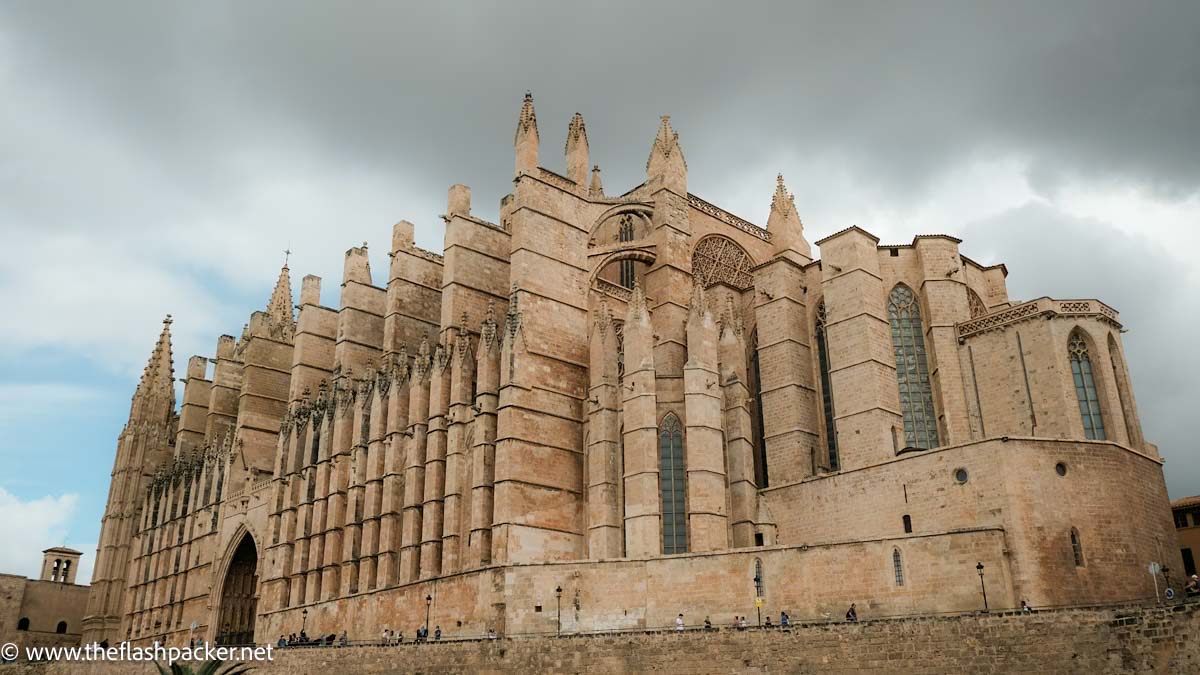
Palma’s stunning 13th-century cathedral, commonly called La Seu (its Catalan name), is the city’s geographic and historical beating heart.
Occupying the site of the former central mosque of Medina Mayurqa, the capital of Moorish Mallorca, this Gothic cathedral has interior features designed by Antoni Gaudí and the contemporary artist Miquel Barceló.
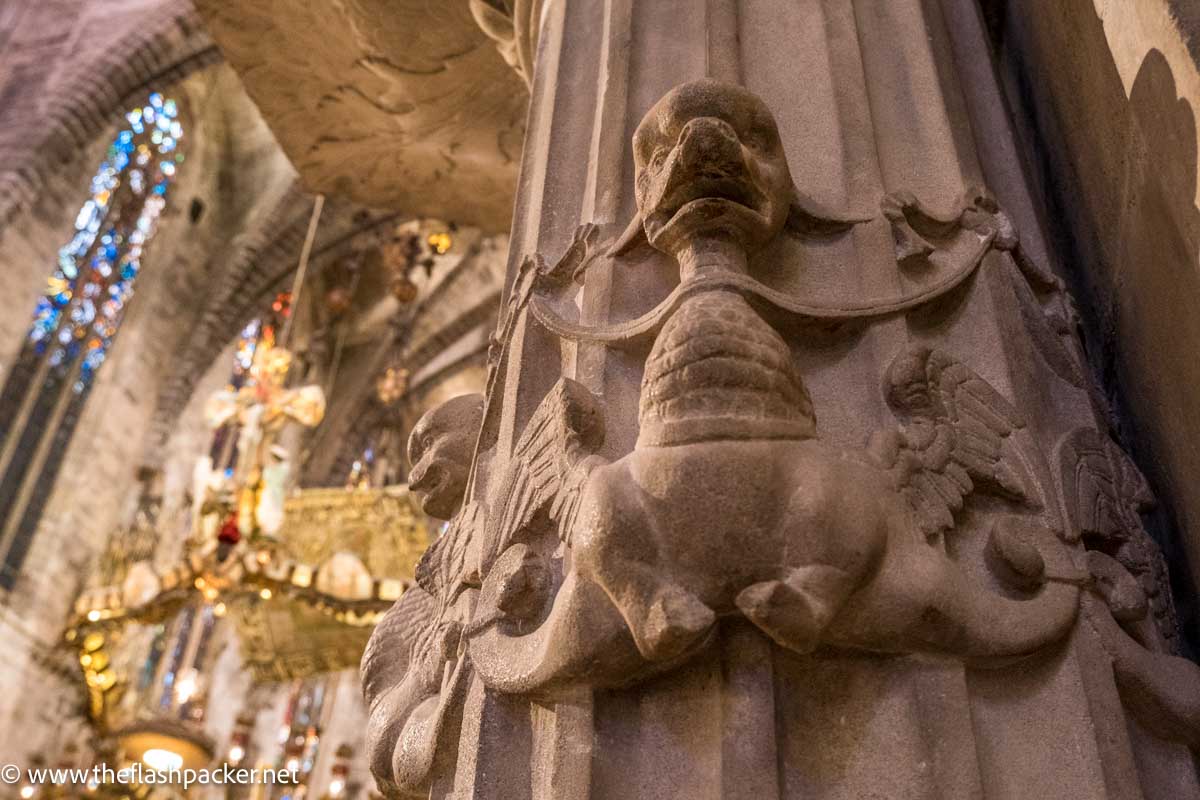
Two things strike you on entering the cathedral: its size and the light.
To describe its nave as soaring is to do it a disservice. At a height of 44 metres, La Seu is one of the tallest cathedrals in the world.
In the morning, the cathedral’s majestic rose window throws shafts of coloured light across its vast exterior. Visitors cast their shows across its floor and its stone pillars are transformed into multi-coloured spectacles.
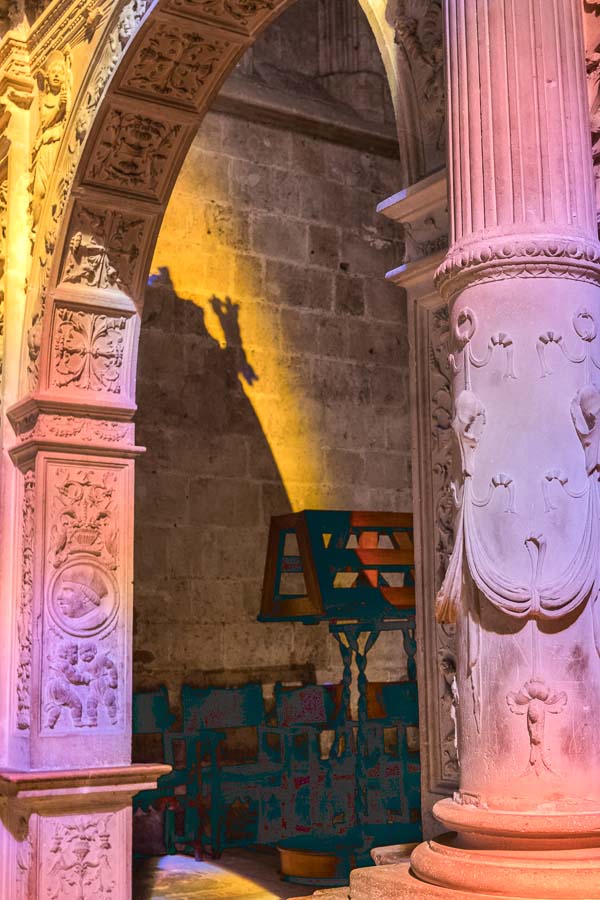
The appeal of the Blessed Sacrament Chapel is more open to debate.
Miquel Barceló created a clay cave with a polychrome mural, inspired by the miracle of the loaves and fishes. It’s artistic Marmite; you’ll either love it or hate it.
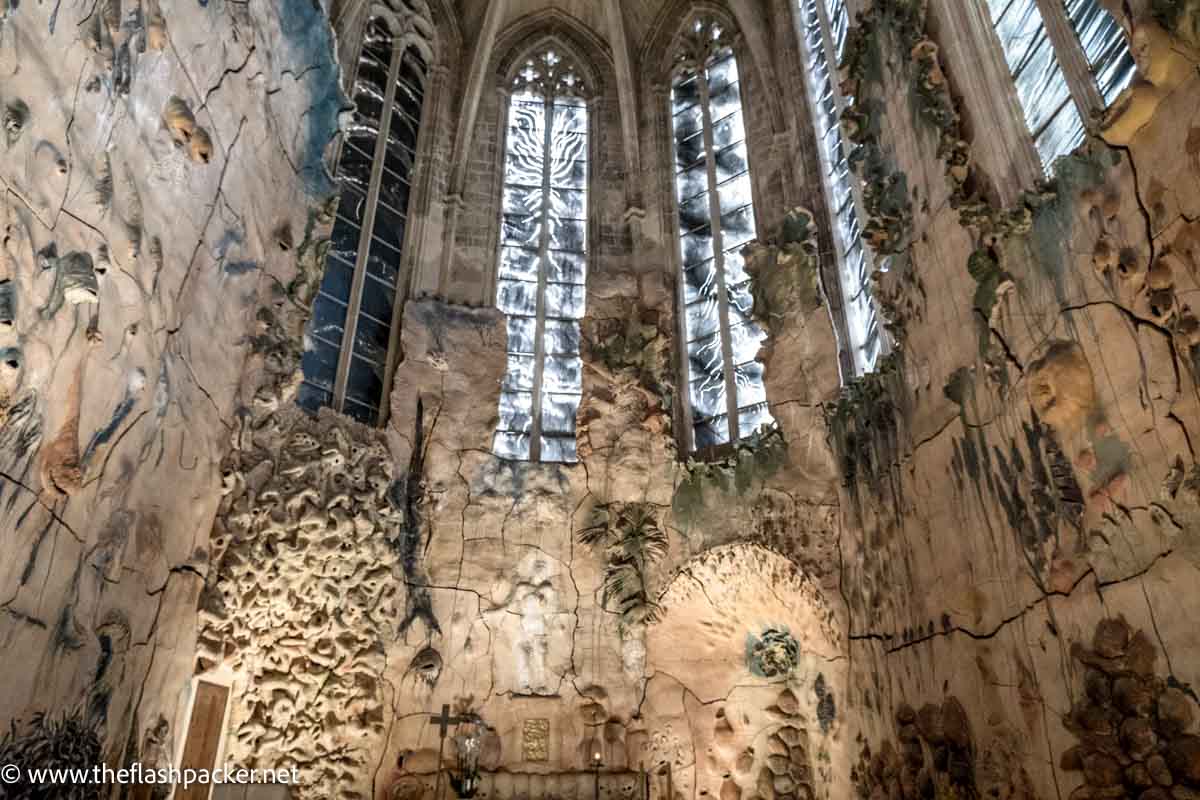
One of the reasons to visit Spain is for the Modernist works by Antoni Gaudí. The hand of the architect behind Barcelona’s Sagrada Familia is very much evident in Catedral de Mallorca.
At the invitation of the bishop, Gaudí worked on the restoration of the cathedral between 1904-1914. Although many of his changes were abandoned following a difference of opinion between the artist and the contractor, he inspired the dramatic crown-of-thorns illuminated canopy that hangs over the altar.
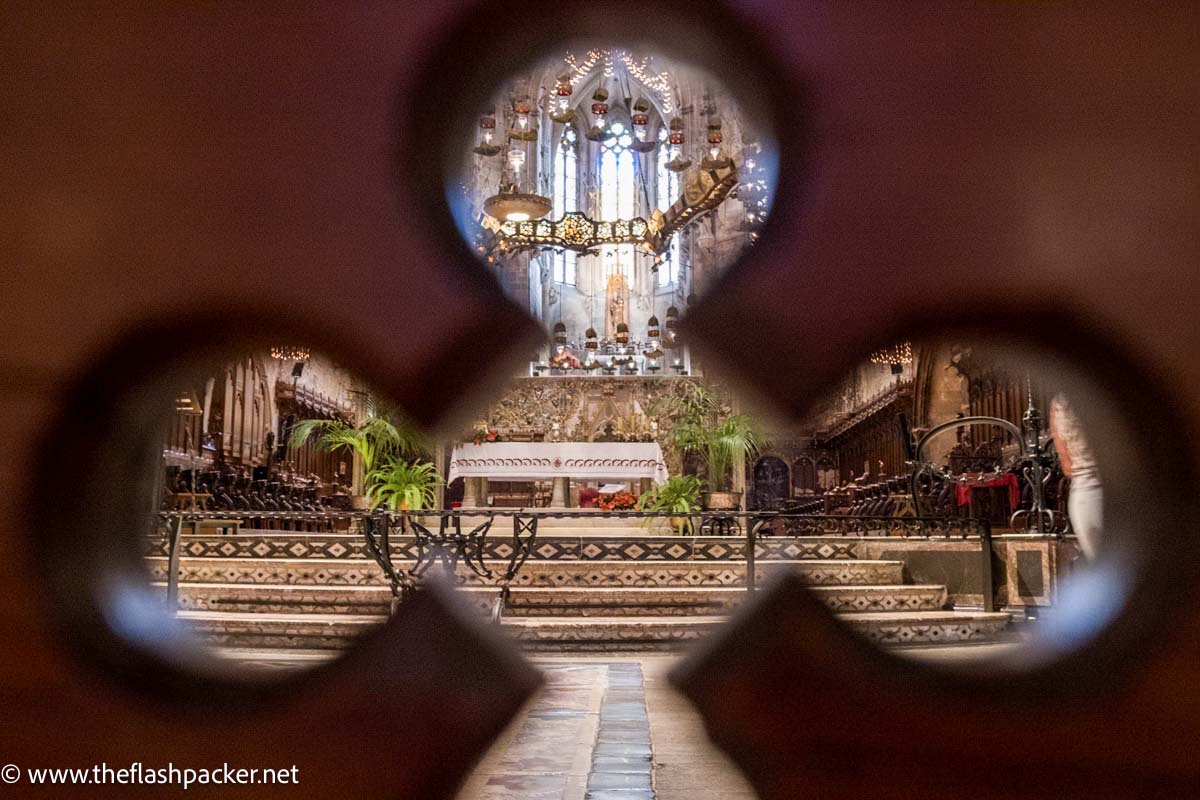
As the main attraction in Palma de Mallorca, the cathedral can get very busy, especially when a few cruise ships are in town. When I visited, four of these behemoths were parked at the cruise terminal and queues snaked along the side of the building.
Avoid the queues by arriving at opening time. Better still, buy your fast-track ticket in advance.
>>> CLICK HERE TO BUY YOUR SKIP-THE-LINE TICKET
S’Hort del Rei garden
The S’Hort del Rei garden (The King’s Orchard) is a three-minute walk from the cathedral.
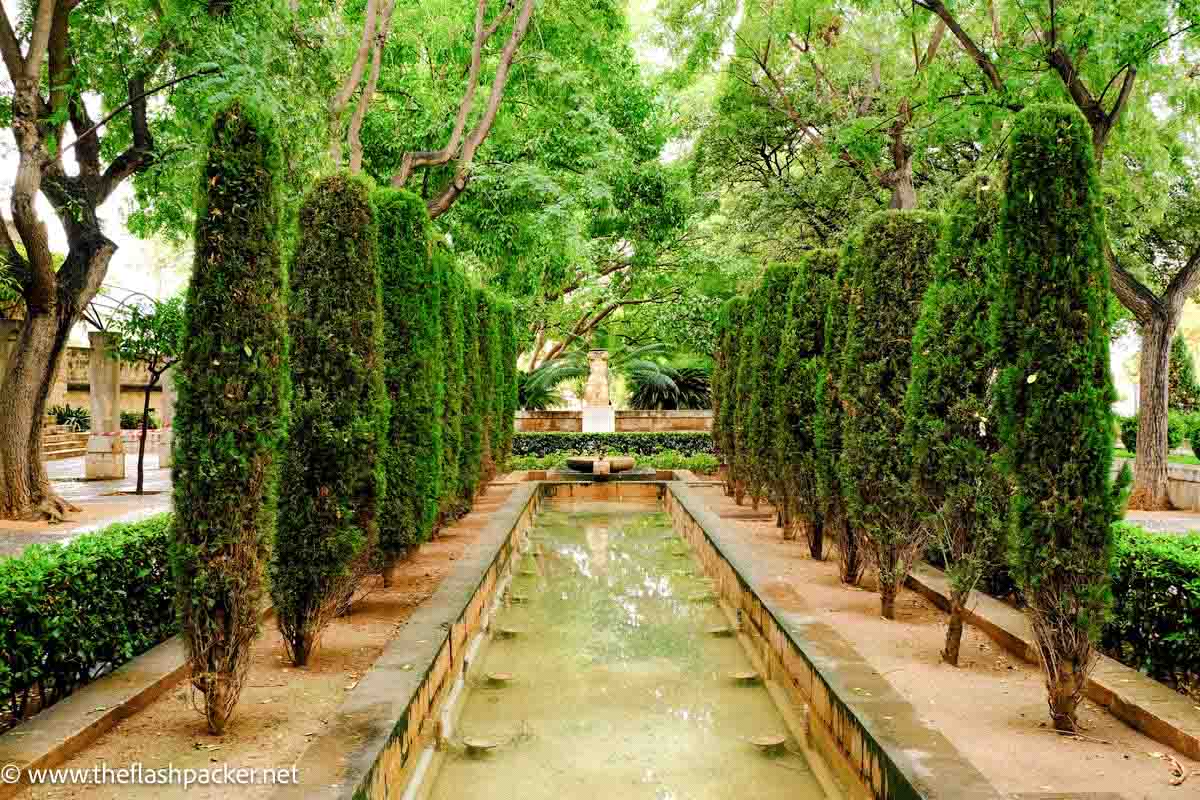
This oasis of cypress trees, trickling fountains, ponds and pergolas is medieval in origin. Formally part of the Royal Palace of La Almudaina, this would have been planted with fruit trees, vegetables, medicinal and ornamental plants.
Today, the S’Hort del Rei is the perfect place for a short break from your sightseeing in Palma de Mallorca and a respite from the sun.
The Arab Baths
These baths are all that remain of Medina Mayurqa. Formally part of a nobleman’s manor house, they are thought to date back to the 10th Century (although the jury is still out on that).
Built from recycled capitals from the Roman and Byzantine periods, in addition to ‘new’ Muslim columns, the Arab Baths are Palma’s history in a microcosm. No two of the dozen columns supporting the half-orange-shaped dome of the tepidarium are alike.
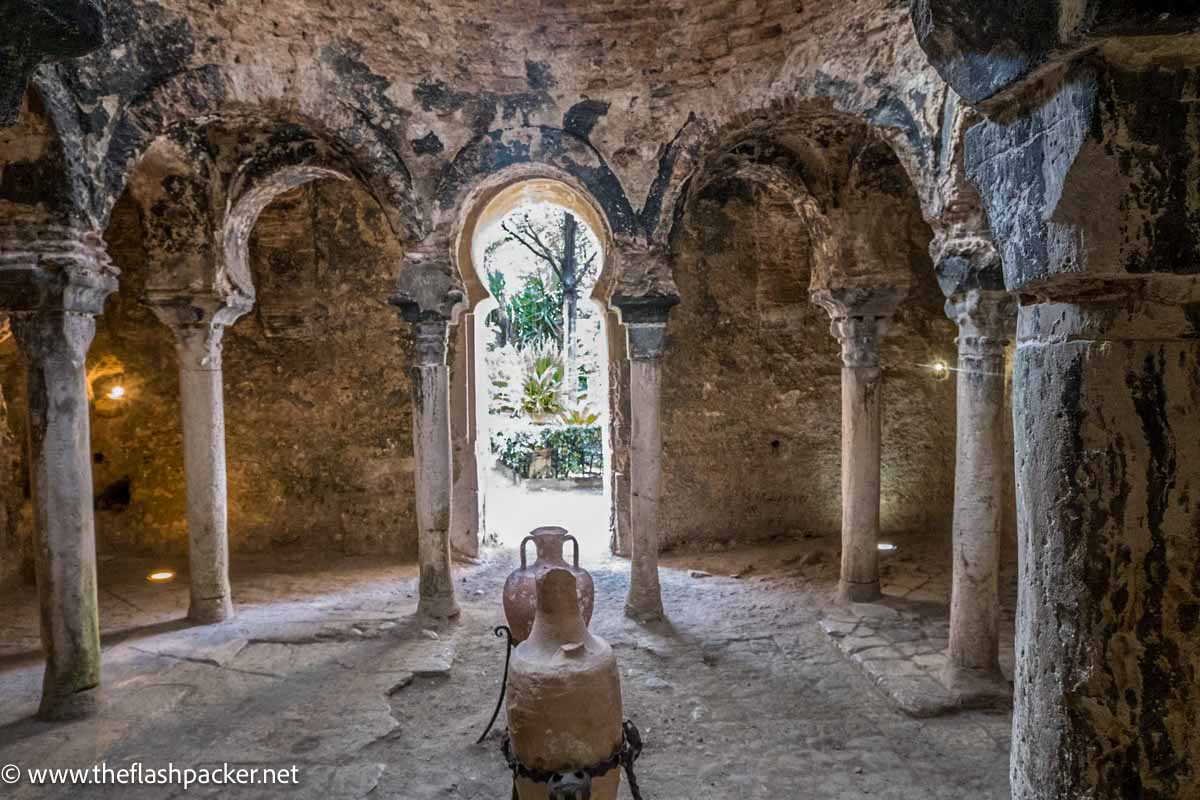
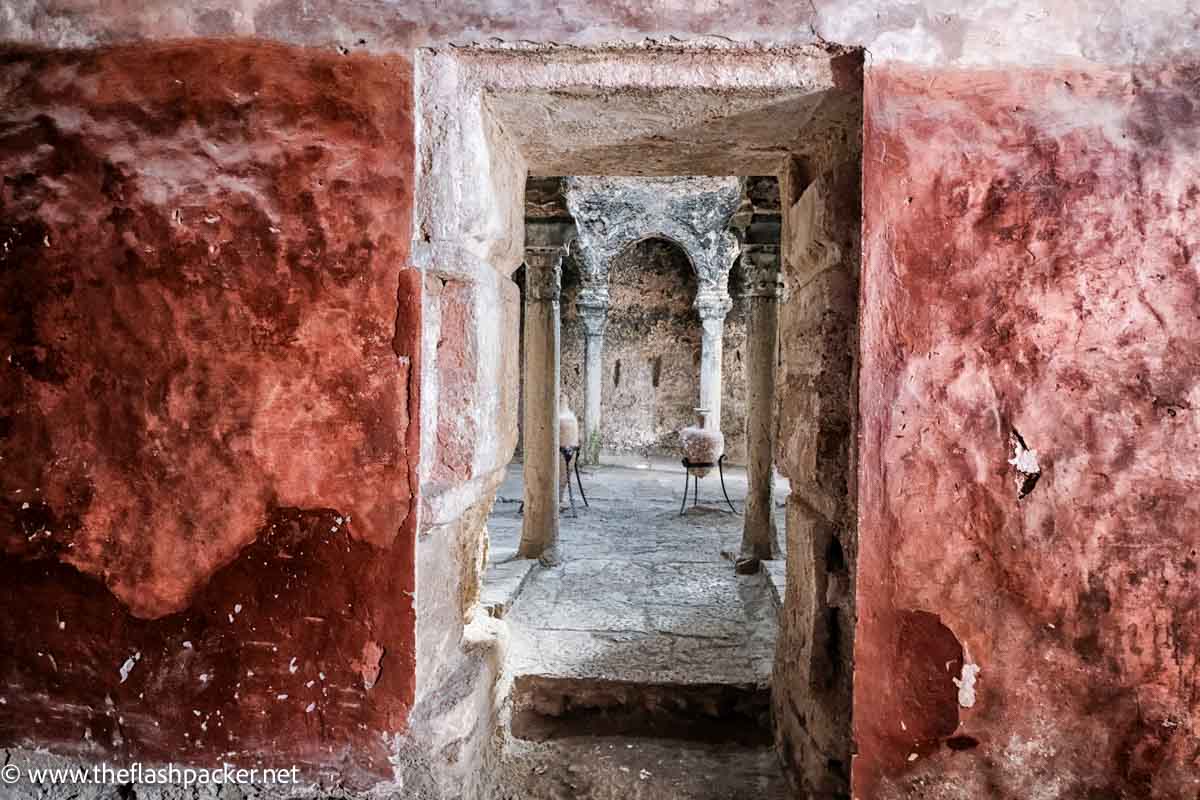
One of the doors of the tepidarium leads to a courtyard, shaded with palm and orange trees. The perfect place to cool off after a hot bath.
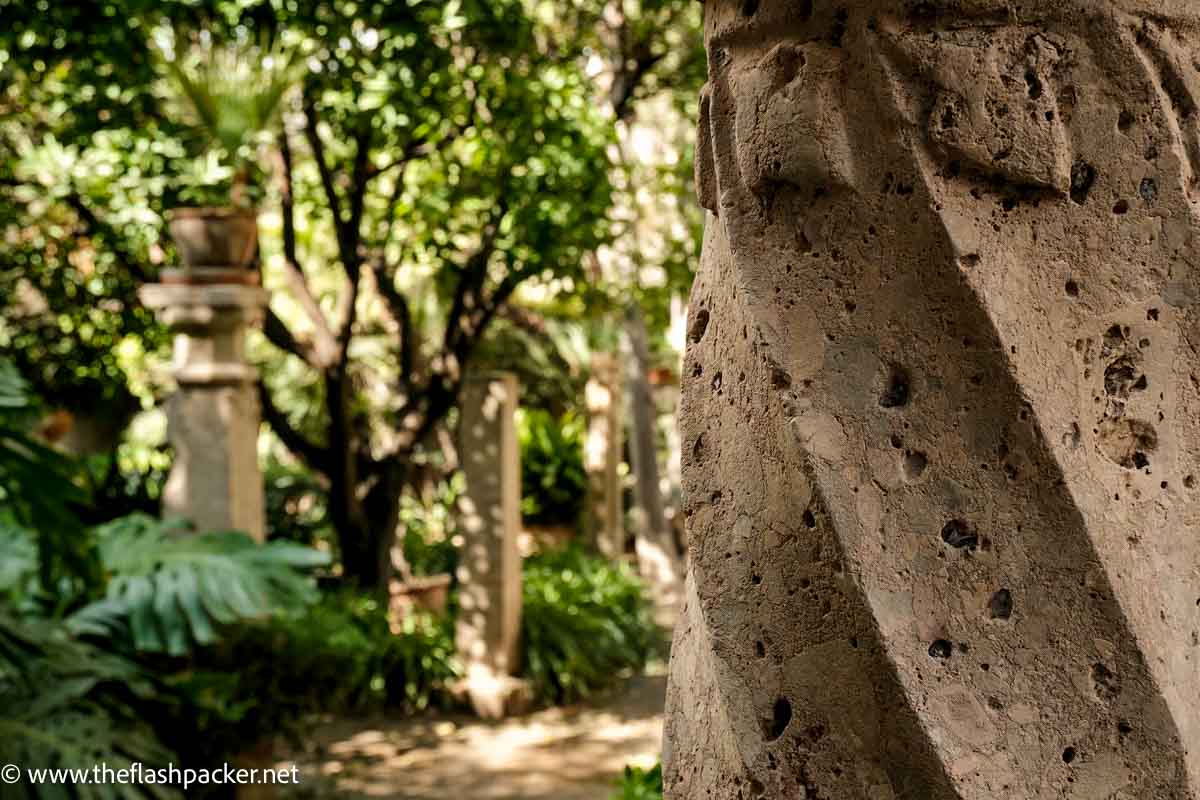
Basilica de Sant Francesc
Basilica de Sant Francesc was founded as a monastery in the 13th Century and is dedicated to St. Francis.
This Gothic-style church is resolutely Mallorcan on the outside, with a sturdy sandstone wall and an intricately carved doorway. Venture inside and you’ll come across peaceful cloisters with orange and lemon trees and a well.
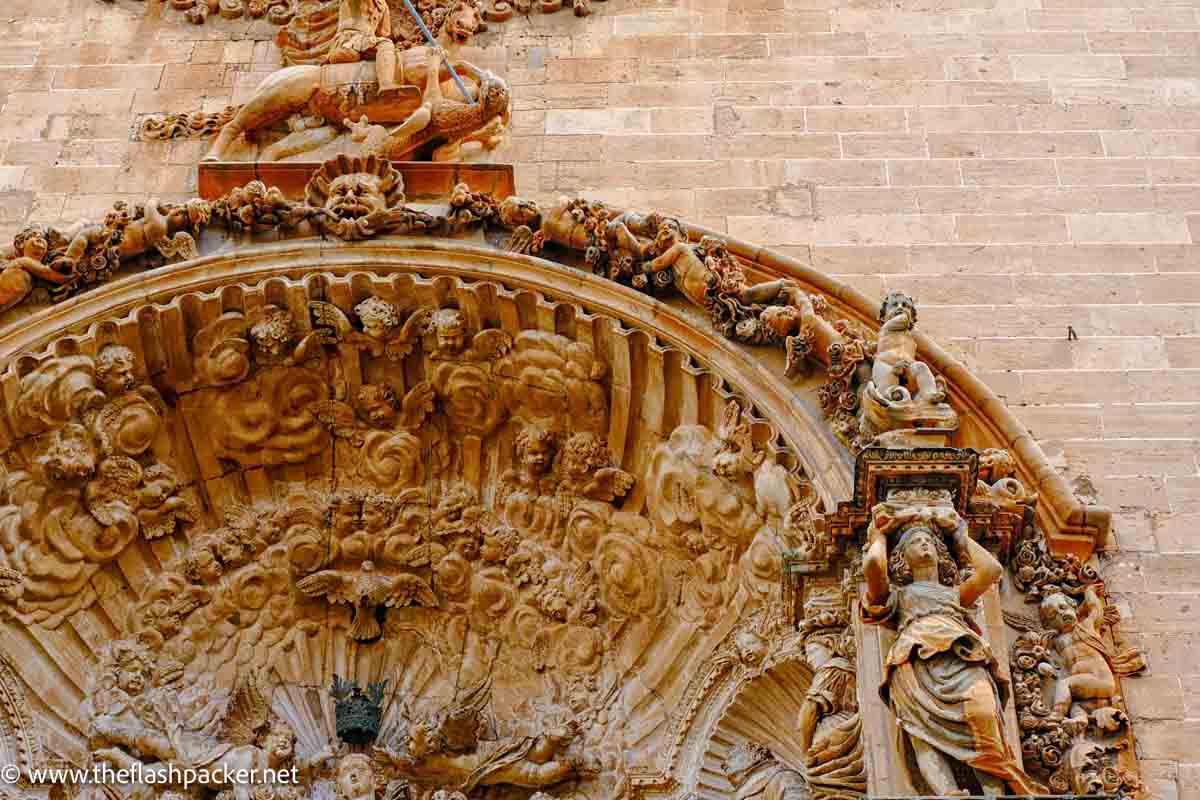
Santa Eulàlia Church
One of the oldest and most important Catholic churches in Palma de Mallorca, Santa Eulàlia Church is dedicated to a 13-year-old girl who was martyred in the 3rd Century for professing Christianity.
Although work on the church was started in 1236, it was not completed until 1570. Inside, it is famous for its splendid Baroque altar and 15th-century paintings.
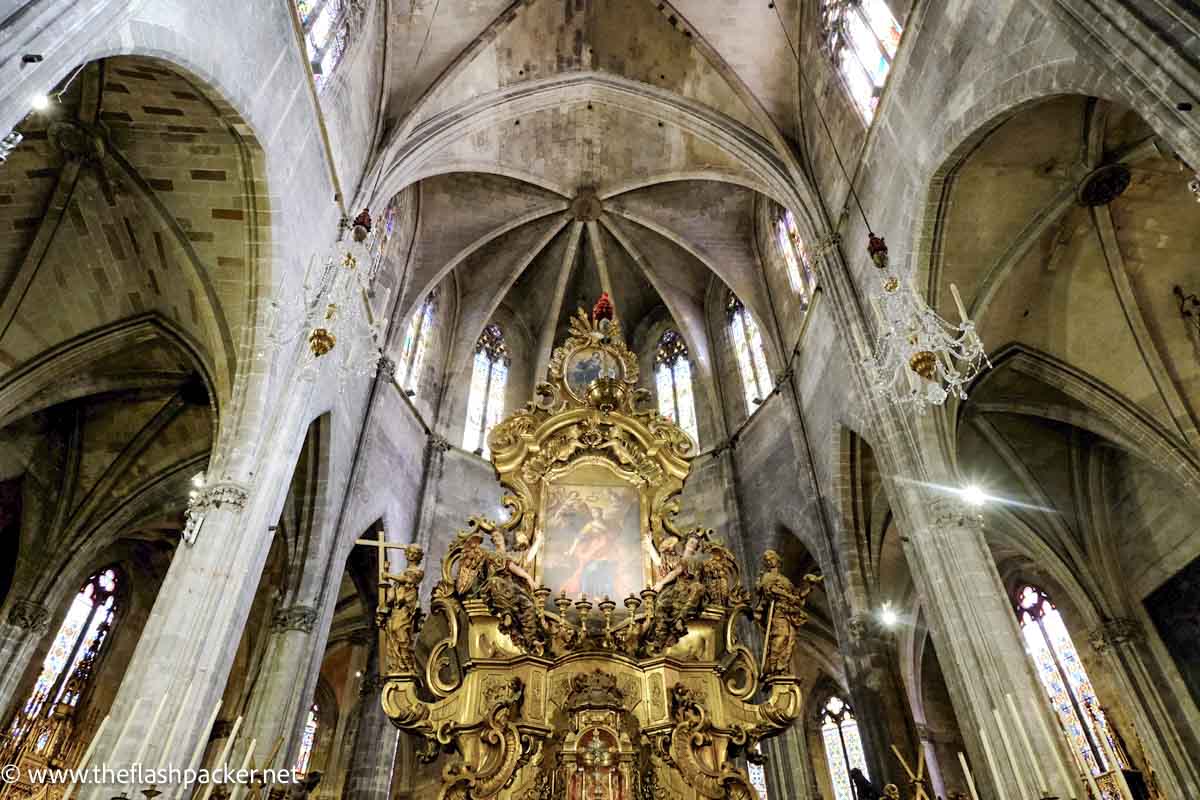
Snack on an ensaïmada at C’an Joan de S’Aigo
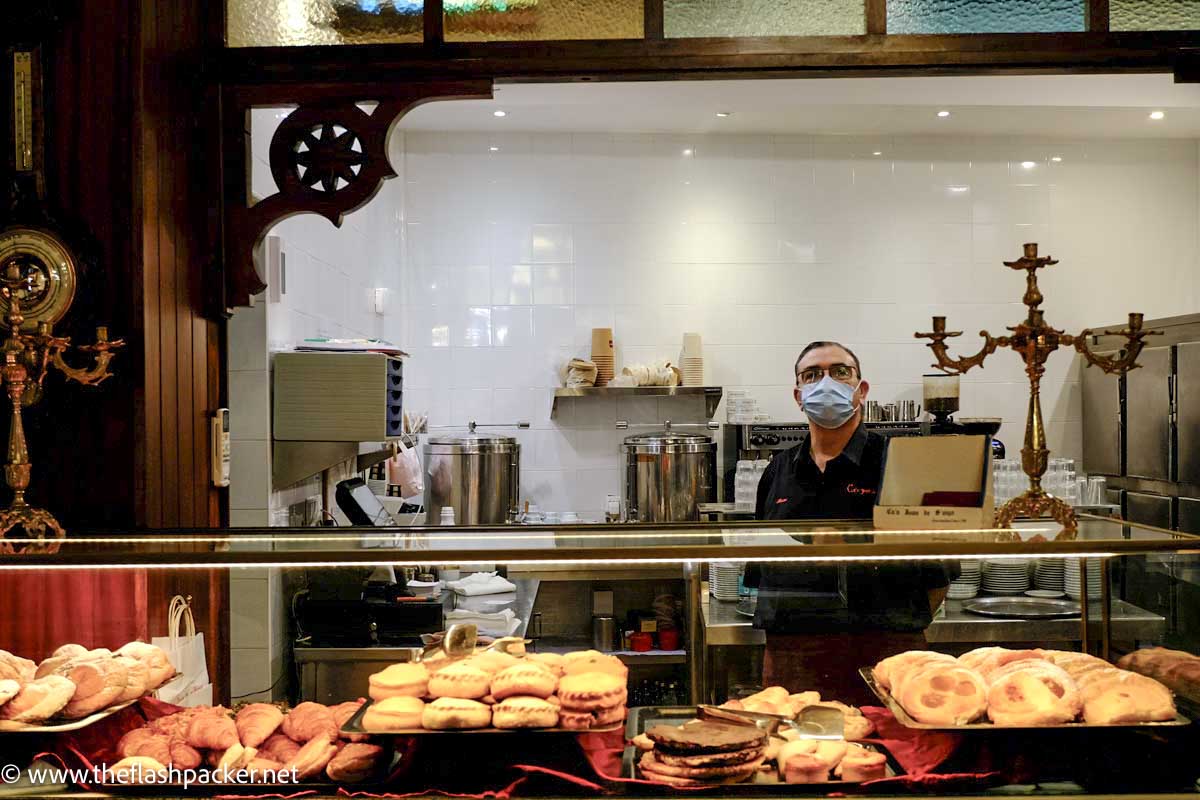
Trying an ensaïmada, the island’s tasty pastry, is an unmissable thing to do in Palma de Mallorca. Traditionally made with sweet yeast dough and saïm, a kind of reduced pork lard, this snail-shaped morsel can be sweet or savoury, plain or filled.
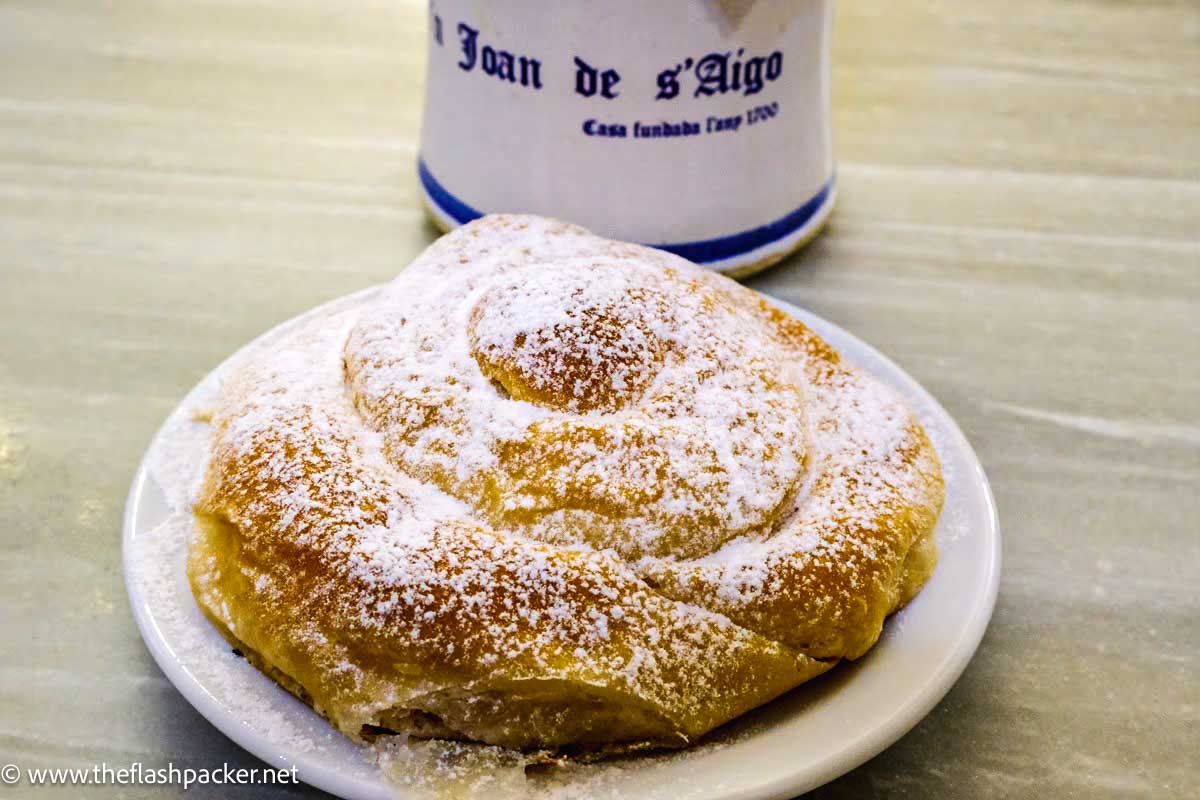
The best place to take time out with an ensaïmada is at Ca’n Joan de S’Aigo, Palma’s most cherished café. Established over 300 years ago, it is also the city’s oldest café and is decorated in typical Mallorcan style.
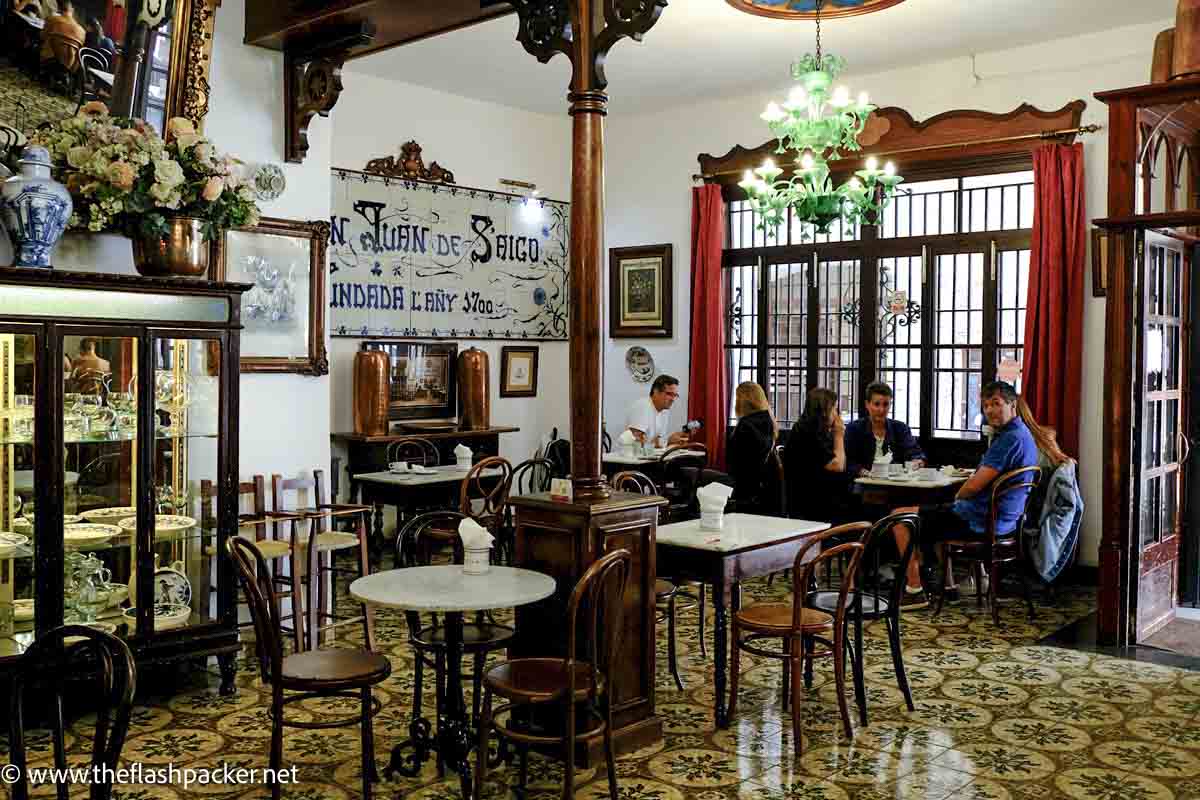
Address: Ca’n Joan de S’Aigo is on Carrer de Can Sanç 10.
Plaça Major
Plaça Major is Palma de Mallorca’s grandiose central square. Lined with arcaded ochre-coloured shops, cafes and restaurants, it is the focal point for local festivals.
For 300 years, Plaça Major was the seat of the Spanish Inquisition.
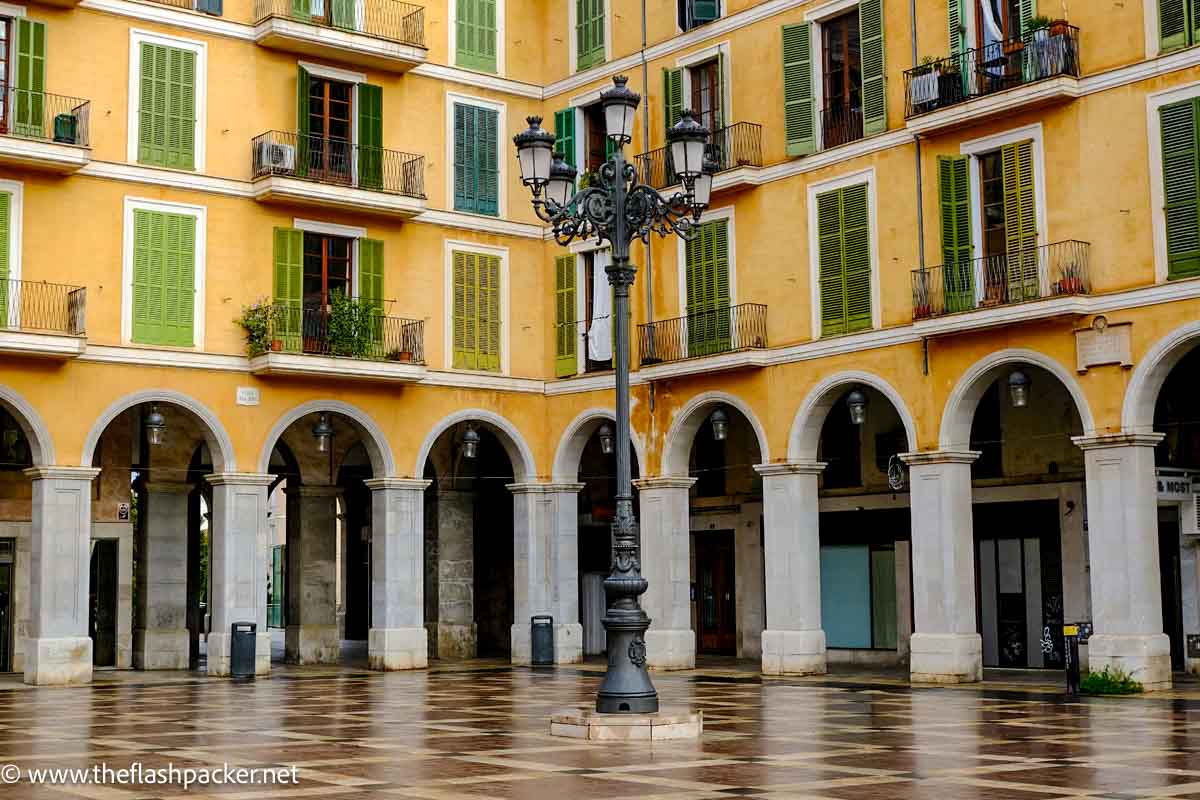
Palma’s famous olive tree
Plaça de Cort is home to an ancient olive tree and Palma’s medieval town hall
The 600-year-old olive tree, Olivera de Cort, was moved from Pollensa, in the north of the island, to Palma in 1989. It is considered to be a symbol of peace.
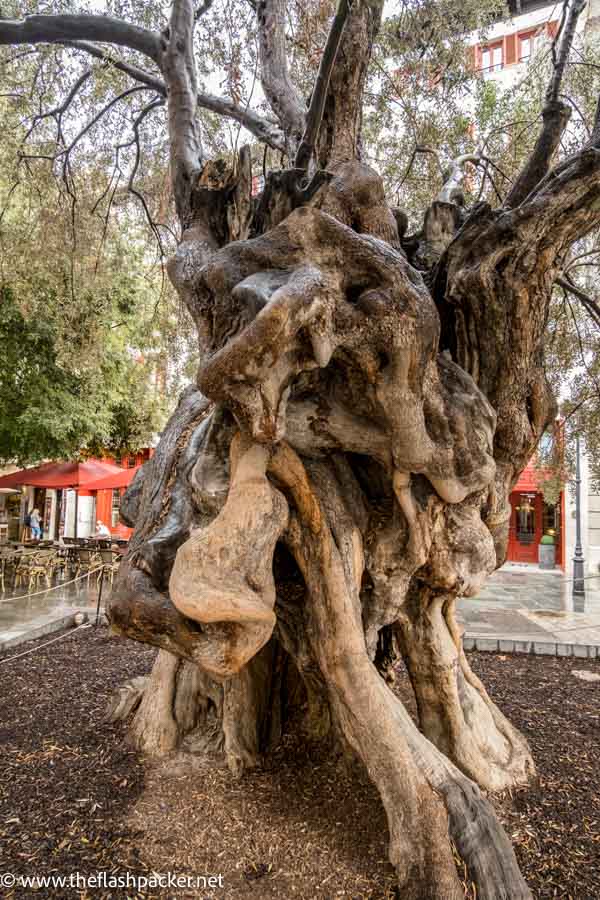
The ornate Baroque façade of the 17th Century town hall hides an earlier Gothic hospital.
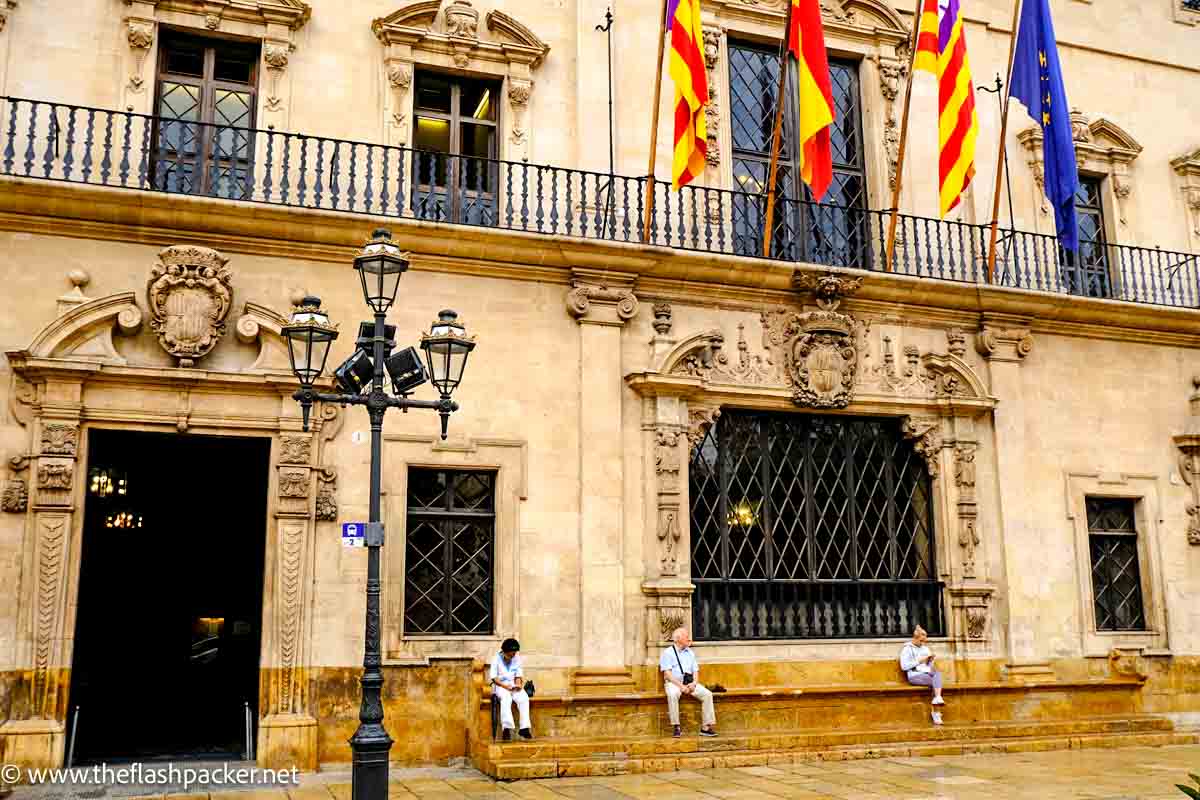
If You Have More Than One Day in Palma de Mallorca
If you more than a day in Palma, extend your sightseeing beyond the Old Town.
Make Bellever Castle your first stop. Sitting on the crest of a wooded hill halfway between the cruise terminal and the Old Town, this is one of few circular castles in Europe (and the only one in Spain).
From here, it’s a 20-minute walk to the Fundació Miró Mallorca in Cala Major.
This museum is dedicated to the work of the prolific artist Joan Miró. 6000 works of his works are exhibited, including paintings, sculptures and ceramics.
When to Visit Palma de Mallorca
Palma de Mallorca has a Mediterranean climate with hot, dry summers and mild winters. Spring (April and May) and autumn (October and November) are the best times for sightseeing and exploring its cultural attractions with fewer crowds.
Summer (June to September) is the peak tourist season with hot and dry weather and a warm sea. Winters in Mallorca are quiet and mild, but rain is not unheard of.
How to Get from the Cruise Terminal to the Old Town of Palma de Mallorca
Palma de Mallorca is a hugely popular port of call for cruises on the Mediterranean Sea.
Most cruise ships park up at Estacio Maritima. Some ships dock at Porto Pí on the western edge of Palma.
From Estacio Maritima, it’s a 45-minute walk to Palma Cathedral. Alternatively, bus No. 1 takes ten minutes to make the journey to Plaça d’Espanya at the northern edge of the Old Town. From here, it’s a 15-minute walk to Palma Cathedral.
From Porto Pi, you can pick up bus no. 1 from the Dic de l’Oest bus stop opposite the fort. It’s a 75 to 90-minute walk from Porto Pí to the main tourist sights.
Most cruise operators will also run shuttle buses from the terminal to the old town. Taxis are also available. Depending on how long you have in port, a hop-on-hop-off bus may be a more cost-effective option.
Getting Around
As Palma de Mallorca is a very walkable city, you won’t need public transport. The only exceptions are if you want to visit Bellever Castle and the Fundació Miró Mallorca.
If you are looking for a leisurely way of seeing the sights, there is a hop-on-hop-off bus.
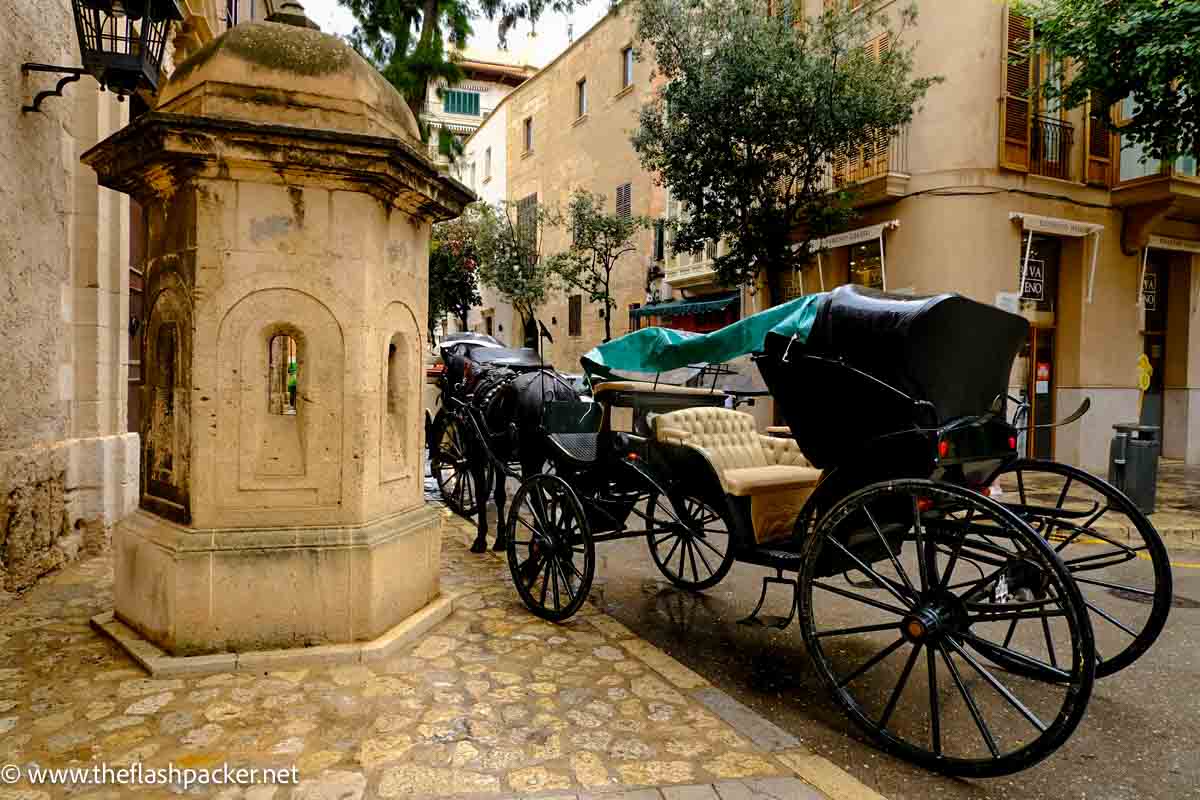
Thank you for reading my one-day Palma itinerary
Whether you are visiting Palma de Mallorca on a Western Mediterranean cruise or as a day trip from elsewhere on the island, I hope you have a fabulous time. I loved visiting Palma again and strolling around its charming Old Town was a tonic, even in the rain.
Happy travels!
PS. If you’ve found this Palma de Mallorca guide helpful, Pin it to read later!
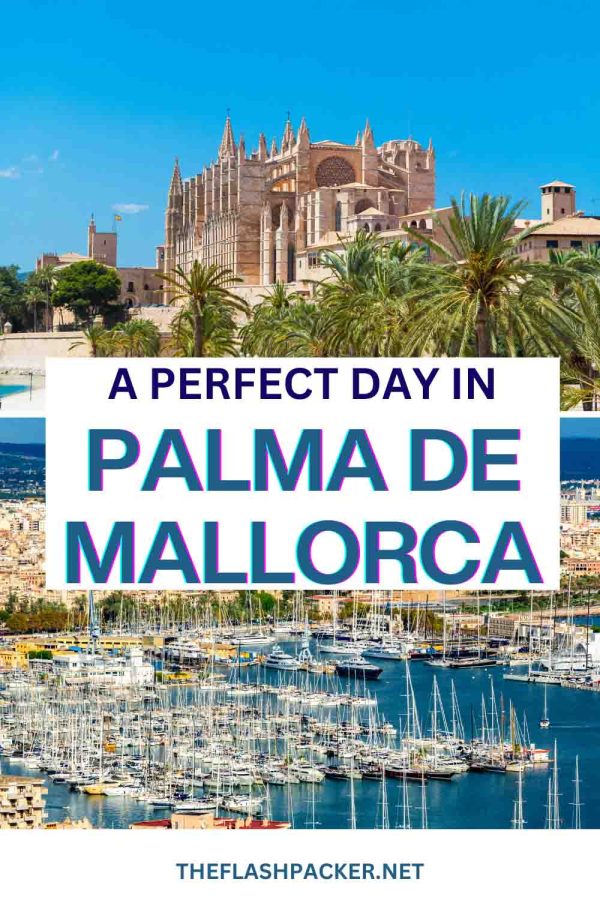
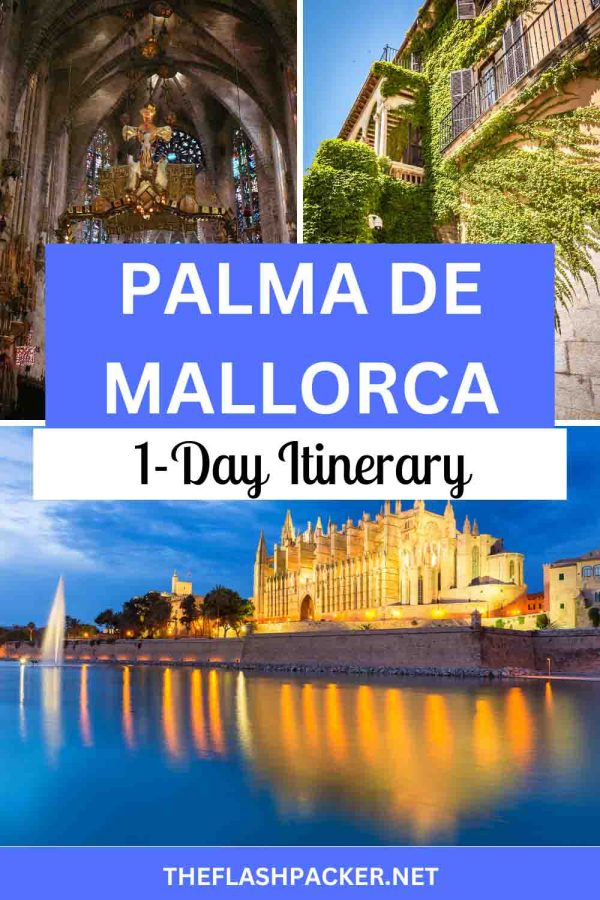

About Bridget
Bridget Coleman has been a passionate traveller for more than 30 years. She has visited 70+ countries, most as a solo traveller.
Articles on this site reflect her first-hand experiences.
To get in touch, email her at hello@theflashpacker.net or follow her on social media.
